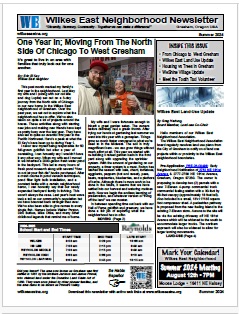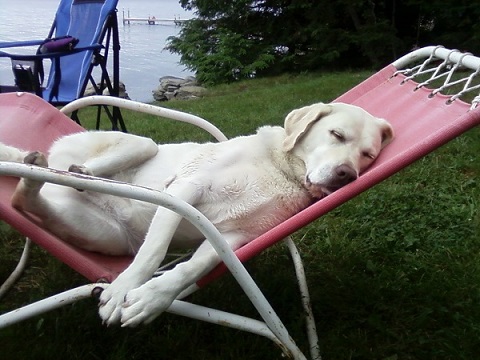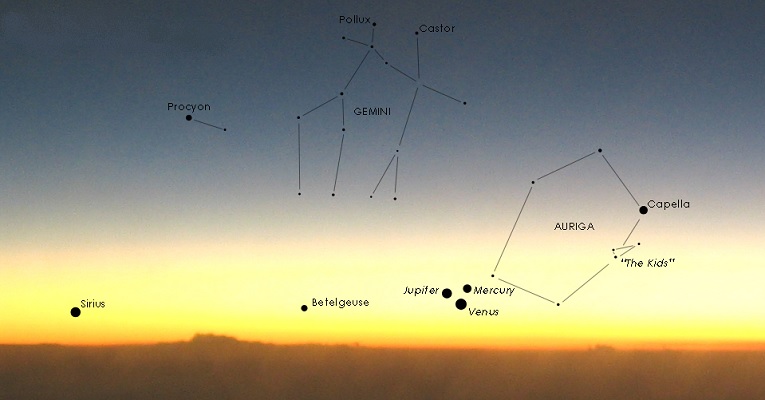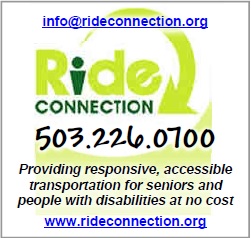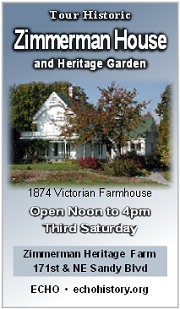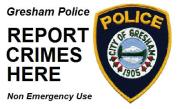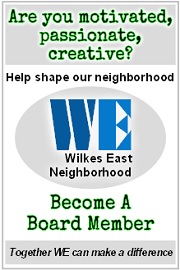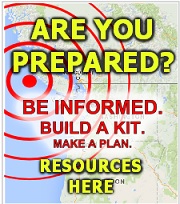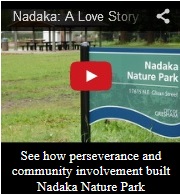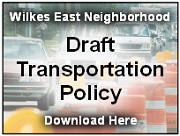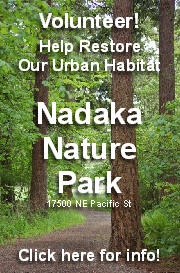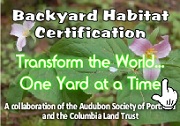Wilkes East Land Use Update November 2024

By Greg Hartung
Land Use Co-Chair
Hello members of our Wilkes East Neighborhood Association. The Wilkes East Neighborhood Association board regularly receives land use plans from the City of Gresham to notify us of land use projects within or proximity to the Wilkes East neighborhood boundaries.
Pre-application PRE-24-00239 16651 NE WASCO ST PORTLAND, OR 97230. Application date 4/19/2024: Proposed standard partition for the creation of (2) parent parcels, one of which is proposed as a flag lot. They are each proposed to contain a quadplex, a permitted housing type in this zone. Current zoning Residential 7 LDR7. Once finalized a MHLD (Middle Housing Land Division) will be applied for. Demolition permit DEMO-24-00044 was issued on 02/12/2024 to remove a single-family home and wooden shed from the property.
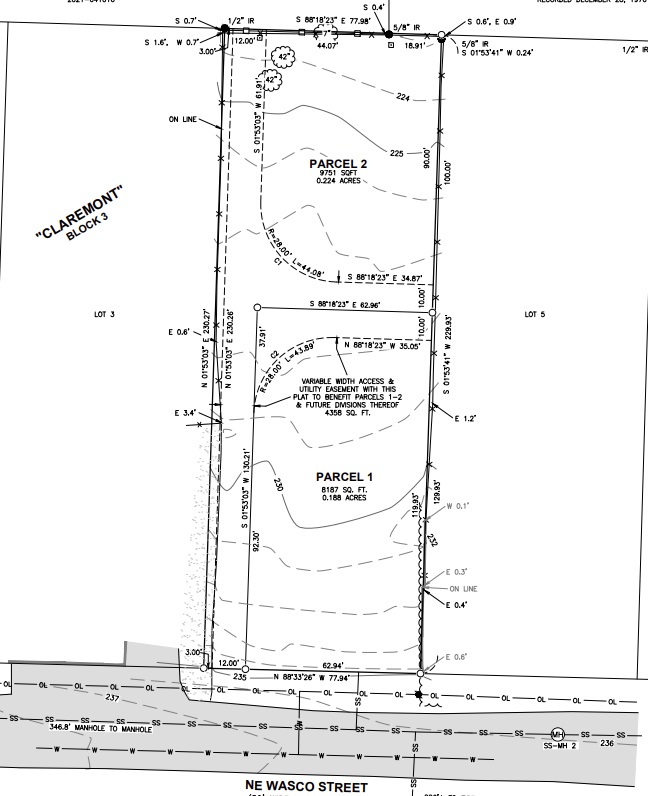 Proposed lot partition. Click to enlarge |
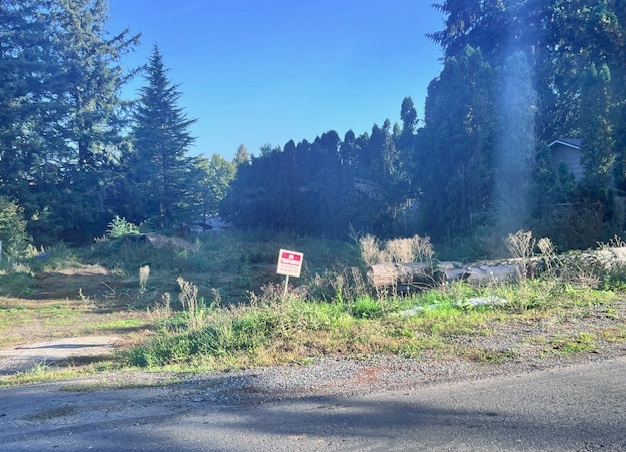 Demolished lot. Click to enlarge |
Design review DR 23-00425 NE Glisan Habitat for Humanity project.
Location 17640 NE Glisan Portland, Or 97230 (across from Nadaka Nature Park). This is a development of 20 two-story dwelling units arranged in 10 duplex buildings with 28 parking spaces, landscape and open spaces. Lot consolidation of 17616 and 17636 NE Glisan was required to form one lot of 17640 NE Glisan. Total land size is 1.41 acre. Tree removal and land clearing has begun. There will be several mature trees in the rear of the property that will be preserved as part of the open space. Street side improvement will include landscaping. Watch for street side improvements and heavy construction equipment.
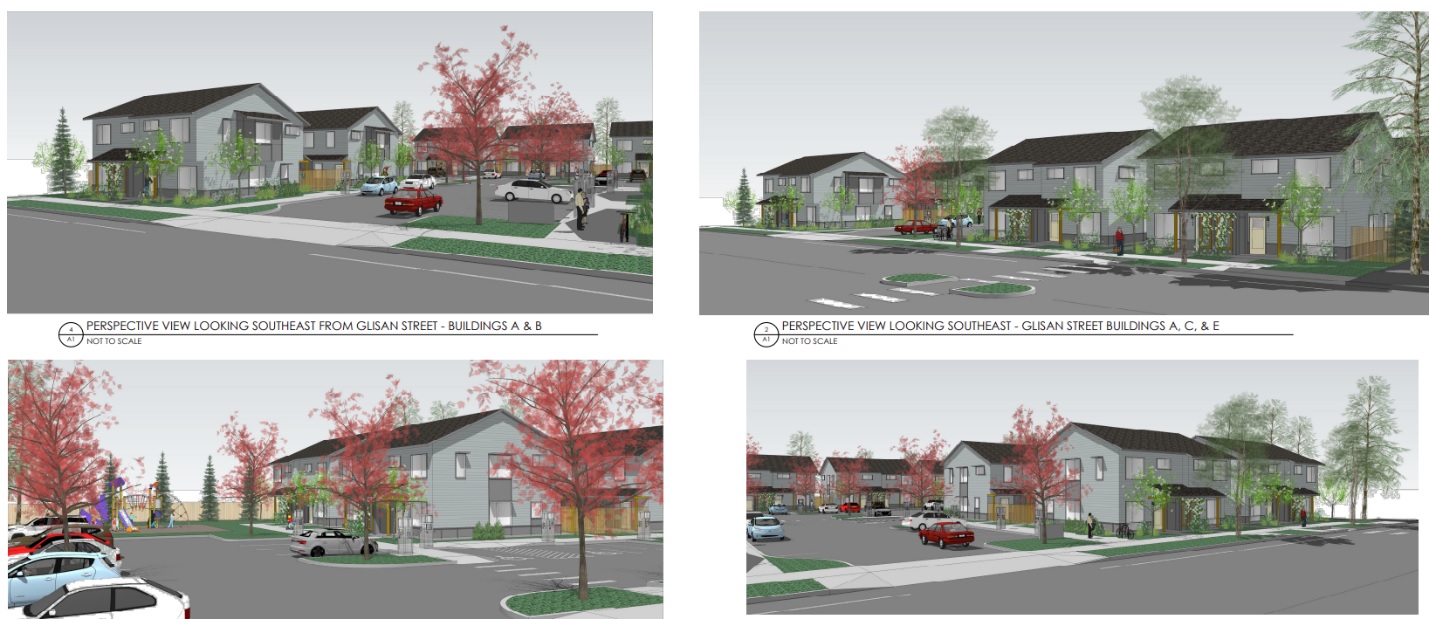
Architect rendering. Click to enlarge
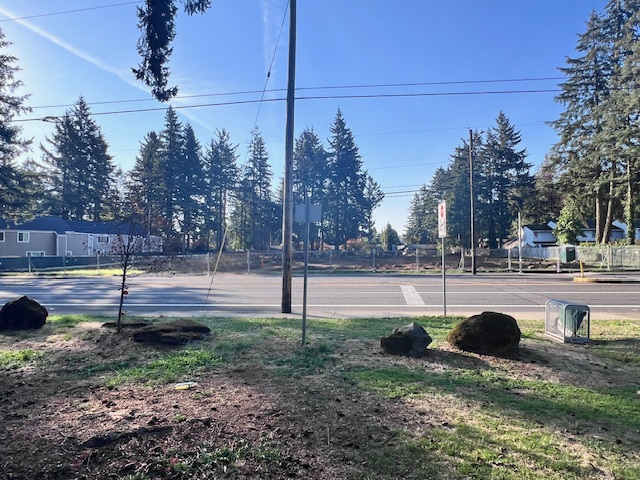
Demolished lot. Click to enlarge
For these and other public records,
Please visit https://greshamor-energovweb.tylerhost.net. You do not need to create or register an account to access project files. To search for project files and public records: Click on the search icon. In the screen that loads, type in the Plan case number in the search field and click on the search button. The page will reload with the results of the search, including highlighted direct links to cases. Click on the highlighted link for the Plan case. In the page that loads, click on the Attachments tab to view project files.
You can also view detailed instructions on how to search for public records. Website: https://greshamoregon.gov/workarea/DownloadAsset.aspx?id=13448
If you have any questions about accessing the files online or any projects, please contact PlanningTech@GreshamOregon.gov
Increased Need at SnowCap. Give to Others Who May Not Share the Same Good Fortune
By Nate Larsen
SnowCap Volunteer Coordinator
SnowCap Community Charities is a philanthropic organization created to provide food, clothing, advocacy and other services to our neighbors in need. Located off 178th and Stark street in the Rockwood area, SnowCap has been providing essentials to people that live East of 82nd, but still within Multnomah County, since 1967.
Over this past summer, SnowCap has been serving an average of 12,600 people per month, nearly 3,000 more than last year. And the sustained increase in the number of neighbors we are serving shows no signs of slowing down.
SnowCap is primarily known for our food pantry. Families and individuals who live in our area can come to SnowCap up to two times each month for free groceries, pet food and hygiene items.
SnowCap accepts donations of just about any kind of non-perishable food, provided it is still in the original, factory packaging. We can also accept donations of fresh fruits and vegetables from gardens and orchards! Some of the most requested items from our clients, are things like soups, stews, chilis and other canned proteins (peanut butter, SPAM, tuna, etc.).
SnowCap also operates an offsite clothing closet, where our clients can make appointments once each month, to select donated clothing to help keep their families warm. To facilitate this, SnowCap accepts donations of any kind of gently used clothing - any size, any shape or any style! Shirts, pants, sweatshirts, jackets, shoes, and even sheets or towels make wonderful donations. We also accept brand new packages of socks and underwear.
But one of the best ways to help, is by volunteering your time! SnowCap is always on the lookout for folks to help assemble food boxes/bags in our warehouse, assist clients as a personal shopper in our offsite clothing closet, or even help answer phones as a receptionist! With a small staff of only 12 people, we literally cannot do what we do, without the help of our wonderful volunteers!
SnowCap’s pantry is open every Monday through Friday from 10am to 2pm, and Monday and Wednesday evenings from 6pm to 8pm. If you are interested in volunteering as an individual or group, please contact nate@snowcap.org, or visit www.snowcap.org for more information.
Village Movement Coming to Gresham! Supporting Positive Aging at Home
By Jane Foreman
Chair, Steering Council
UpRiver Village
A new Village is forming in the Gresham-Troutdale area to provide older adults with a way to comfortably age-in-place. UpRiver Village isn't a real estate development or a retirement community. Instead, members live in their own homes; they can be homeowners, renters, in shared housing, or living with relatives. UpRIver Village will join Villages NW, a 501(c)3 not-for-profit organization with 13 existing and developing Villages in NW Oregon and SW Washington. The Village Movement embraces the strategy of bringing services to people rather than moving people to services. UpRiver Village will serve seniors within the city limits of Gresham, Troutdale, Fairview and Wood Village.
Steering Council Chair Jane Foreman was a volunteer with and member of Eastside Village for two years before moving to Gresham in December where there is no Village. So she set about creating one with support from Villages NW mentors. A core group of committed volunteers meets monthly to work on organizational development. When the development phase is complete, UpRiver Village will open for membership and start scheduling services.
UpRiver Village is building the foundation to provide practical services to members as well as opportunities for socializing. Volunteers will provide services such as transportation to appointments and shopping, occasional assistance with housekeeping and yard work, and help with technology. Social and recreational activities will include opportunities to meet like-minded seniors for coffees, book groups, potlucks, group walks, and more. Please see information on upcoming events at www.uprivervillage.org. Most events are open to the public at this time.
UpRiver Village currently needs volunteers to help with organizational development, infrastructure creation, communication, outreach and marketing. After UpRiver Village opens, volunteers will be needed for direct services to senior members.
The first Village in the United States - Beacon Hill Village - started in Boston 25 years ago. UpRiver Village will also be a member of the national Village to Village Network that includes more than 500 existing and developing Villages nationwide.
For more information about UpRiver Village visit www.uprivervillage.org, email contact@uprivervillage.org, or call (503)-489-8813.
Download the Wilkes East Neighborhood Summer 2024 Newsletter here!
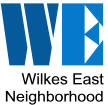
|
Summer 2024 Newsletter"Diversity, Harmony, Community - |
Download your copy here. (includes active web links)
¡Descargue nuestro boletín en español aquí!. (incluye enlaces web activos)
Newsletters are a regular publication of the Wilkes East Neighborhood Association. They are hand-delivered to over 1,500 residences and businesses in our area 3 times per year, timed to correspond with our general meetings.
View archive | Policy & Ad Rates
|
Got a story or tip to share? |
|
Volunteers Needed |
What is the Dog Days of Summer?
Dog Days of Summer: July 3 - August 11
The “dog days of summer” occur during the hottest and muggiest part of summer.
But where does the term come from? Why do we call the hot, sultry days of summer “dog days?” Here's the answer...
In ancient times, when the night sky was free from artificial lights people in different parts of the world drew images in the sky by “connecting the dots” of stars. These star pictures are called constellations, and the constellations as we know them came from our European ancestors.
Ancient star gazer's saw images in the stars of bears (Ursa Major and Ursa Minor), twins (Gemini), a bull (Taurus), and others objects, including dogs (Canis Major and Canis Minor). (more below...)
The brightest of the stars in Canis Major (the big dog) is Sirius, which also happens to be the brightest star in the summer night sky. In the summer, Sirius, the “dog star”, rises and sets with the sun.
The conjunction of Sirius with the sun varies somewhat with latitude. And the “precession of the equinoxes” (a gradual drifting of the constellations over time) means that the constellations today are not in exactly the same place in the sky as they were in ancient times. Today, the "dog days" occur during the period between July 3 and August 11.
And now you know!
One Year In; Moving From The North Side Of Chicago To West Gresham
|
It’s great to live in an area with families that truly look out for one another. By Eric El Kay |
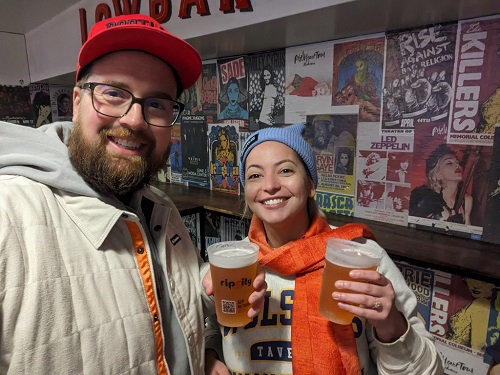
|
This past month marked my family’s first year in the neighborhood. Last May my wife and I (along with our cat Mia and dog Lupita) set out on a 3-day journey from the North side of Chicago to our new home in the Wilkes neighborhood of Gresham (or Portland?). Over the past year, we set out to explore what the neighborhood has to offer. We’ve also taken on quite a lot of projects around the house. These activities along with starting new jobs and making new friends have kept us pretty busy over the last year. They have also led to quite an eventful first year in the PNW. Here’s a peek at what the El Kay’s have been up to during Year 1.
I never saw myself being responsible for 50 full-grown goldfish but after a year of caretaking, I can honestly say I wouldn’t have it any other way. When my wife and I moved in we inherited a 2000-gallon fresh water pond in the backyard. This led to many hours of fresh pond research along with several “How to not let your fish die” books purchased. After a crash course in pond vacuum techniques, pond filter light bulb installation, and a constant battle with a certain neighborhood heron, I can honestly say that our newly expanded backyard family is thriving. This wasn’t always the case. Last year's heat wave took a toll on our community’s population but we have bounced back stronger than ever. We’ve also been able to give names to every single fish. Names include Walter Payton, Dick Butkus, Mike Ditka, and many other childhood legends that remind me of home.
My wife and I were fortunate enough to inherit a great garden setup. The owners before definitely had a green thumb. After trying our hands at gardening last summer we went into this year with a gameplan. Things grow so much faster compared to what we’re used to in the Midwest. The soil is truly magnificent here - we can grow things without much effort at all. This year we started with re-building 3 raised garden beds in the front yard along with upgrading the sprinkler system. With the amount of gardening on our property, a timer system is a must. Robyn has started the season with kale, chard, tomatoes, eggplants, peppers (hot and sweet), peas, beets, raspberries, blueberries, and a plethora of herbs. Although there is more work to be done in the future, it seems that we have settled into our harvest and watering routines early. Now we begin the endless learning of preservation, and whatever version of “living off the land” we can muster.
In between spending time out back with our Hall of Fame goldfish and greenery, we have done a fair job of exploring what the neighborhood has to offer. Outside of daily check-ins with our neighbors (which is not something you normally get in a Chicago townhouse), we’ve made it a point to find every hidden gem. I’ve made a habit out of running at the H.B. Lee track and (when I’m feeling adventurous) the Glendoveer Golf Course, which from our house to around the course and back typically results in about a 4.5 mile run. While exploring the local culture and community we’ve become very familiar with food trucks, especially our favorite, the Fairview Food Plaza and Food Cart Heaven on Glisan. I’ll also admit, as someone who grew up hiding from weather half the year, easy access to Powell Butte has turned me into an outdoorsman.
This year has brought a lot of change for the El Kay’s. The community has made this transition period a positive experience. I really can’t express how great it is to live in an area with families that stop each other on the street to chat and truly look out for one another. While change can be scary, you have all made this a positive experience with your community and sense of belonging. We know2025 will bring more home improvement projects, goldfish babies, and many many more trips to La Isla Bonita and Migration Brewing. It’ll also bring more changes. I for one can’t wait to see what else it brings.
Meet Ed Spradlin, 'Tooth Taxi' volunteer extraordinaire
|
Hi! My name is Ed Spradlin, I am 77yrs young, and I have lived in Portland/Gresham all my life. I grew up in North Portland across from Columbia Park. I attended grade school in Portsmouth and Highland. I then attended Jefferson Hight School, followed by Oregon State University. I was drafted to Vietnam, and after my return continued my education to graduate from Portland State University. |
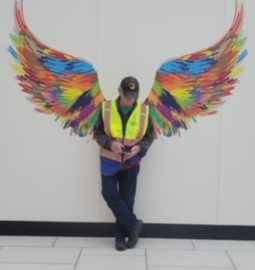 Ed Spradlin |
My family ultimately moved out to Gresham 45 years ago, and I have lived there ever since. I am now involved in volunteering for a non-profit that helps under privileged children get access to dental care. The Dental Foundation of Oregon is the non-profit organization that supports and funds the "Tooth Taxi". This is basically a large rolling dental clinic on wheels that travels across Oregon to schools and communities not only educating families but giving actual dental care to children in need.
|
My family and friends have also joined me in my efforts to help raise money for this cause. What started as me walking the streets in search of cans and bottles to raise money, has now blossomed into an ever growing team of individuals sharing in this effort. Team "Can Do". |
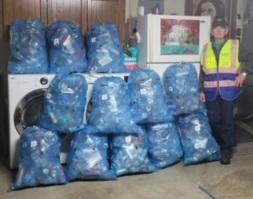 Some of the many bottles & cans Ed has collected for the the 'Tooth Taxi' |
Every day I am overwhelmed by the beauty of all these individuals who have eagerly stepped up to be a part of something that is growing in support. People want to help. They just, often, don't know how. I have realized something in this process, and it is validated everyday by all the people who have joined this cause. We can do amazing things alone, but even more amazing things together. Together we are team "Can Do".
Outstanding job Ed!
July Heat and Wildfires
|
By Garret Hartung |
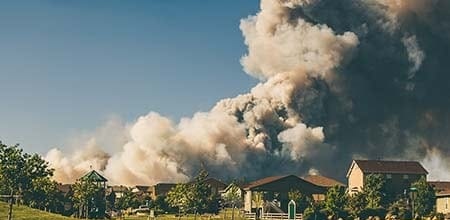
|
The Pacific Northwest had a rather mild start to the summer of 2024. The month of June ended up a whopping 2.7°F below average with precipitation also coming in slightly below average. This is a stark contrast from the last three June’s which all featured above average temperatures. The slightly cooler temperatures we saw in June were in part due to persistent upper level troughing in the Gulf of Alaska, an area of cooler air aloft that maintains onshore flow and often steers frontal systems through the Pacific Northwest. This is a pattern we often see in the wintertime, hence why this June was dubbed “Junuary” by many local meteorologists.
A common adage around the Pacific Northwest is that summer does not start until July 5th. According to that, summer was right on time this year as a potent upper-level ridge developed across the Western US around July 4th, allowing for many locations to see their first 100°F readings of the year. This early July heatwave did not match the magnitude of the great June heat dome of 2021 as temperatures peaked at only 104°F at PDX. However, this heatwave was historic in terms of duration with five consecutive days of temperatures reaching or exceeding 99°F, which ties the record set back in August of 1981 and July of 1941.
Warm and dry conditions have continued through the first half of July with high temperatures so far averaging 11°F above the average of 80°F for the month of July. The persistent hot and dry conditions have quickly dried out the vegetation across the state, allowing for wildfire season to come roaring back to life, especially east of the Cascades. So far this year over 300,000 acres have burned in Oregon, already surpassing the roughly 260,000 acres that burned in all of 2023. Most of the fires so far have been human caused. On July 16th/17th, a system moving up the Oregon coast triggered many thunderstorms across the central portions of the state, likely starting dozens of new fires. So unfortunately, the acreage burned will continue to increase as we head deeper into the driest period of the year.
There will likely be a period or two where smoke makes its way west of the Cascades during the later part of the summer, especially if we get an offshore/easterly flow event. Smoke is a regular and natural occurrence for the Pacific Northwest, but it can be hazardous at times, especially for more vulnerable population groups. Having new filters in HVAC systems and running air purifiers can help to limit smoke particles inside of the home. N-95 mask can also be helpful when venturing outside should air quality becomes hazardous from smoke. It is also important to be extremely careful in our wildland areas for the rest of the summer as even the smallest spark can start large and dangerous fires.
Housing Versus Trees In Gresham: The trees are losing, but housing developments may eventually stop
By Janet Unruh, Wilkes East neighbor
For nature lovers who hate to see the land scraped bare for housing developments, our best hope is that soon, it will no longer be profitable for developers to build new housing. This is our best hope because the city turns a deaf ear to the pleas of residents to stop, or at least reduce the size of new developments.
(If you don't see the full article below, Click "Here")
Wilkes East Land Use Update July 2024

By Greg Hartung
Land Use Co-Chair
Hello members of our Wilkes East Neighborhood Association.
The Wilkes East Neighborhood Association board regularly receives land use plans from the City of Gresham to notify us of land use projects within or proximity to the Wilkes East neighborhood boundaries.
Pre-Application PRE 23-00498: Early Neighborhood Notification of 2751 NE 181st Avenue & 2777-2789 NE 181st Avenue, Gresham, Oregon 97230. The owner is proposing to develop two (2) parcels with a new 7-Eleven 4-pump commercial truck commercial fueling station with a 30-foot by 68-foot canopy (approximately 18 feet tall). Also included is a small, 13'x11'/135 square foot compressor shed. A pedestrian pathway is proposed from the new fueling island to the existing 7-Eleven store. Access to the site will be via the existing driveway off NE 181st Avenue which will be widened to the south to accommodate larger trucks. The northern approach will also be widened to allow for larger turning movements.
|
An exit-only will be constructed providing access for fueled trucks direct access onto NE 181st Avenue southbound (which has already been discussed and approved by City of Gresham transportation staff). The two existing lots may also be combined. An Early Neighborhood Notification meeting will be tentatively scheduled for the week of July 29, 2024. |
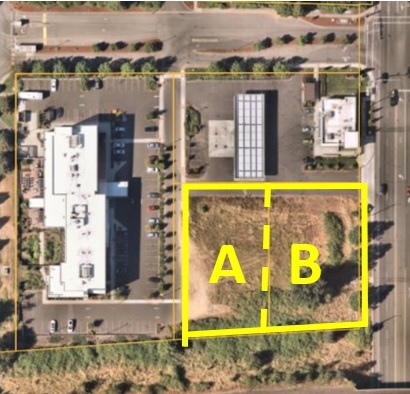 Click to enlarge Click to enlarge
|
Design review DR-23-00600, Location 17311 NE Halsey St, Portland Or 97230, proposal: Retroactive review of previous tree removal and approximately 25,000 square feet of outdoor storage area and conversion of parking to outdoor storage, plus new outdoor storage are of approximately 38,000 square feet. Applicant proposed a minor variance to exceed the maximum standard for outdoor storage by 20%. The proposed includes past and future removal of 111 regulated trees.
Wilkes East Neighborhood Association submitted public comments regarding the tree removal. They acknowledged the need for some tree removal to allow for business expansion but described the requested amount of tree removal as “excessive.” They described several benefits which mature trees provide to the urban landscape and noted their importance as a fixture of the Wilkes East Neighborhood.
Staff response Staff agree with the many benefits provided by mature trees as described by the Neighborhood Association. Preservation of mature trees is a goal of the City of Gresham. The City is presently revising the Tree Regulations in the Community Development Code to better reflect community values. While the tree removal associated with this application is significant, the applicant proposes to retain and protect 142 mature trees on site. The applicant does not propose removing more than the necessary number of trees to accommodate the proposed expansion of their outdoor storage area.
|
Staff find that reasonable efforts have been made to retain mature trees where possible and that the applicant’s proposal meets the standards for Type II Tree Removal in Section 9.1000 |
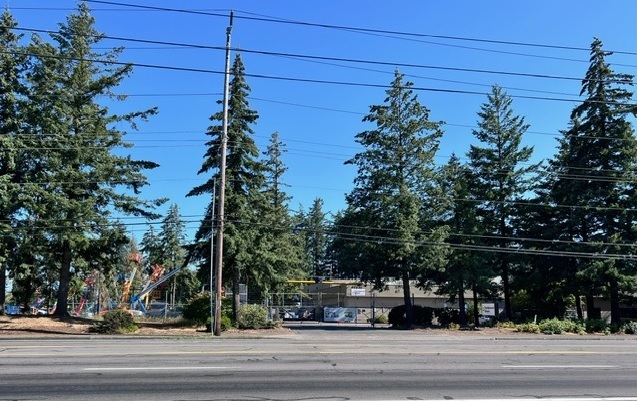 Click to enlarge Click to enlarge
|
Permit number BLDC-21-05690 Taco Bell New Build 181St. Location 2309 NE 181st Ave, Gresham, Or 97230. Land clearing and construction is underway for a new Taco Bell with drive through. The developer had disputed the Pedestrian ADA access ramp to 181st citing that the property does not have 181st frontage and pedestrian traffic is negligible.
|
Landscaping requirement exceptions for 6 new trees that conflicted with overhead utilities was considered in lieu of a Tree Fund Contribution of $600 per tree. ODOT would not allow trees to be planted on the adjacent ODOT owned property. |
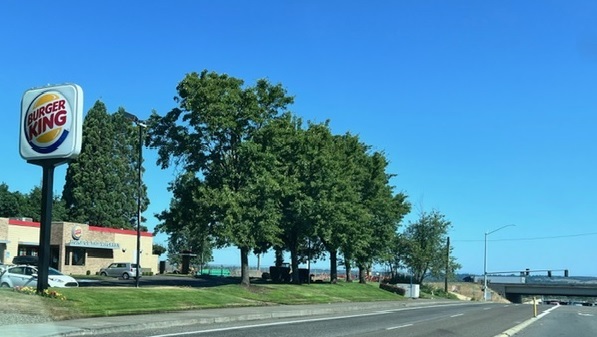 Click to enlarge Click to enlarge
|
For these and other public records, you can visit the City of Gresham, OR
website: https://greshamor-energovweb.tylerhost.net. You do not need to create or register an account with online services to access project files.
To search for project files and public records: Click on the search icon.
In the screen that loads, type in the Plan case number in the search field and click on the search button. The page will reload with the results of the search, including highlighted direct links to cases. Click on the highlighted link for the Plan case. In the page that loads, click on the Attachments tab to view project files.
You can also view detailed instructions on how to search for public records at: https://greshamoregon.gov/workarea/DownloadAsset.aspx?id=13448M.
If you have any questions about accessing the files online or any projects, please contact PlanningTech@GreshamOregon.gov


